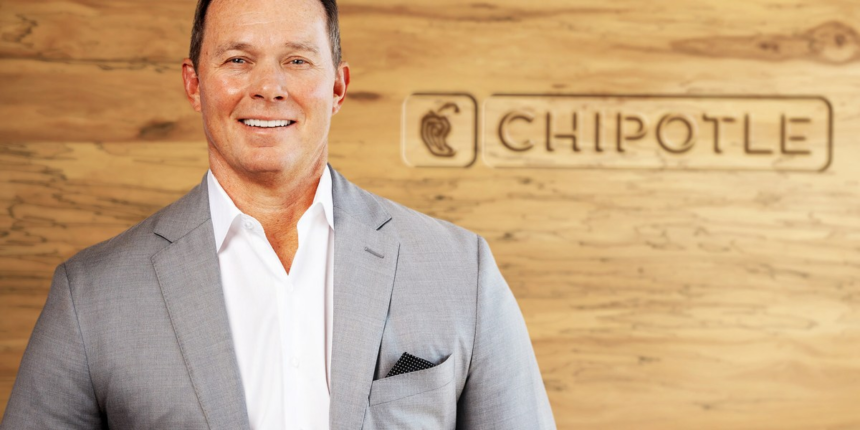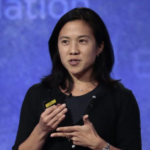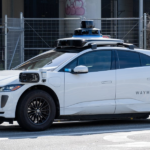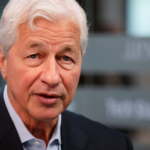As Boatwright, CEO since last November, recalls it, Ells told him that Chipotle didn’t need to be friendly, it just needed to be fast. That’s changing now that Boatwright is in charge. And friendlier service is a key prong in his plan to leave his mark on a quick-service chain.
“Our team members got so focused on creating the experience efficiently that they can just forget to smile,” Boatwtright tells Fortune in a recent interview at Chipotle headquarters in Newport Beach, Calif. That doesn’t mean an in-depth exchange about how your kids are doing in school, he hastens to add. But it does mean basic greetings and questions like “What can I make fresh for you today?” or phrases like “Thank you for spending your hard-earned money at Chipotle,” which Boatwright says do not slow employees down, but rather add a more welcoming vibe to what is after all a hospitality business.
“We’re all fighting for market share, we’re all fighting for dollars,” he says. And that means the right-brain skills of making customers feel welcome have to be deployed along with the left-brain skills needed for best-in-class operations.
That’s all the more important given that Chipotle’s plan to grow includes more international expansion, notably its bold bet on Mexico, going deeper into smaller U.S. cities and trying to get more business from each of its 3,500 existing restaurants. In the 10 months since he took the reins, initially on an interim basis, Chipotle shares have barely budged, reflecint a “wait-and-see” attitude on Wall Street.
But Chipotle’s top executives insist there is place in the market for its Americanized Mexican food given its focus on freshness and high standards.
“We’re not just another American fast-food place that’s coming,” says chief brand and marketing officer Chris Brandt, using a term many in the industry find derogatory, preferring “quick-service restaurant.” “It seems a bit like a selling-ice-to-Eskimos type of thing,” he jokes. But, he says, the white space in the market for Chipotle is Mexican-esque food of a certain quality, and freshness of ingredients in a faster environment.
What’s more, the Mexican experiment, done in partnership with a restaurant operator, Alsea, that has extensive experience there, will tell Chipotle if and how fast it can go further afield in Latin America. Brandt and Boatwright both say they are not worried about any anti-American sentiment abroad that would affect Chipotle expansion, in light of the sparring between the U.S.’s and Mexico’s governments in recent months. “I don’t know if that trickles down to brands,” says Boatwright.
This is where operations, Boatwright’s area of expertise for years, comes in. Chipotle uses 53 ingredients to prepare its food and is working hard on equipment innovation to make cooking easier without affecting the final product. A produce slicer and a device to help workers cut onions quickly are just two of the changes being made to speed up production without, the executives insist, affecting quality.
Boatwright would also like to see quicker food innovation and go from two limited-time-offer (LTOs in industry jargon) items a year, or a temporary additional menu item meant to stoke interest, to perhaps three. Data analytics more sophisticated than the ones it used just a few years ago have allowed Chipotle to avoid misfires with its LTOs, like the Garlic Guajillo Steak disappointment in 2022, giving Boatwright and his team more confidence to innovate.
Currently, Chipotle has a hit on its hands with honey chicken bowls and burritos, a product inspired by a Nashville food trend. “We’re not adventurous at all,” says the CEO. “We follow a very strict stage-gating process. We’ll know long before its hits the market whether it’s going to be successful or not.”
But one thing no one should expect: lower priced items gumming up the menu. Chipotle tried that during the financial crash of 2008–2009, only to find customers yawning.
“We’ve seen in the past is that it really didn’t lead to more visits,” says CFO Clymer. “The market testing we’ve done found that people are really stuck on what it is they go to Chipotle for.” (The company was able to pass on much of the inflation in recent years to customers with little pushback, though executives say they are being careful regarding the impact of tariffs on items like avocados and Australian beef.)
And so as Chipotle looks to build on its 2024 sales of $11.3 billion, and quickly reverse a same-restaurant sales decline last quarter, it has a number of levers at its disposal. But execs say they are mindful of the changes that can add to sales initially but that ultimately would damage a brand anchored in what it calls food integrity.
“When brands start trying to be everything to everyone, they lose their identity,” says Boatwright.









